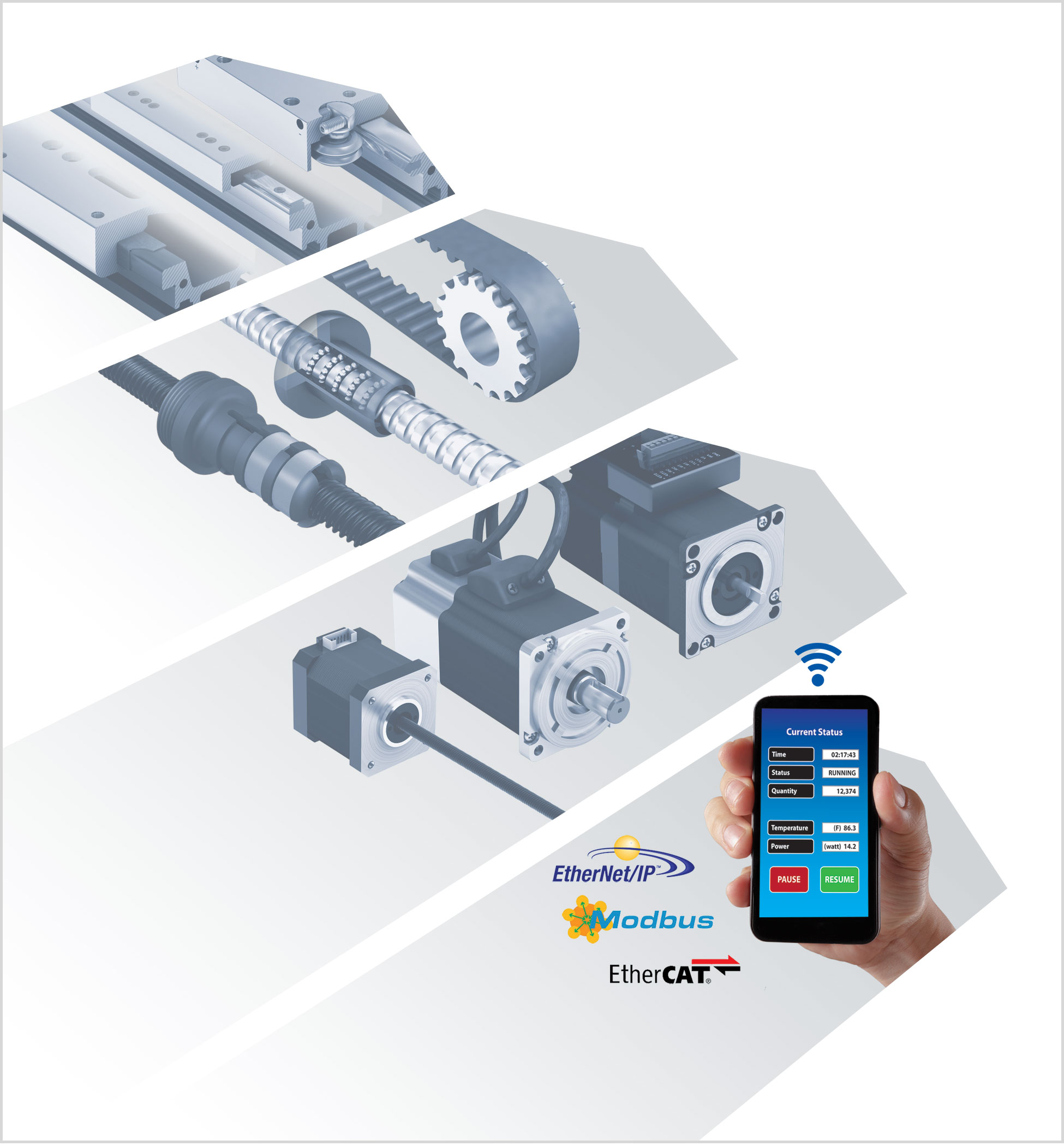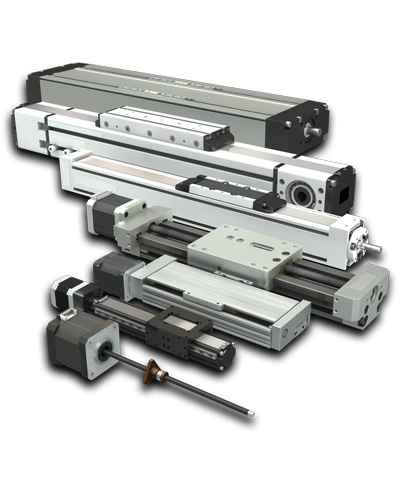Linear actuators, or mechatronics, combine mechanical engineering, electronics, computer engineering, telecommunications engineering, systems engineering, and control engineering to improve and optimize product design and manufacturing processes. The term linear actuator has come to mean different things in different industries and applications. In a general sense, every linear actuator is a device which converts some type of rotary force and applies it to achieve an in-line or linear movement. This force could be coming from a hand crank or electric motor transferred through some type of screw for example.
Generally there are two types of linear actuators. The first type of actuator, often called a rod-style actuator, typically is round and has a screw in the middle of the moving element. This element or rod extends out the end of the cylinder and retracts back into the cylinder in a linear fashion. Along with being called actuators, often these are called by such other names as roller screw actuators, pneumatic or hydraulic cylinders, jack screws, etc. These types of actuators are typically only used in single axis applications.
The second type of actuator is built around either a square or rectangular structure of some sort, that encloses the drive or force transfer mechanism (screw, belt, etc.). This drive mechanism is attached to a carriage which is supported by some type of bearing system that guides the linear motion. PBC Linear specifically manufactures this type of electro-mechanical linear actuator with a range of drive options that can be powered either by a hand crank or motor. These types of systems can easily be configured for multiple X-Y-Z applications.
A third type worth mentioning has emerged on the market in recent years. It is the linear motor actuator, which rather than using a traditional rotary motor, incorporates a magnetic linear motor directly into the linear guidance system.
As product development cycles continue to increase and rapid advances in technology continue to develop, the need for this type of integrated approach is even more critical, especially in linear motion applications. There are several key advantages that linear actuators have over more traditional component based linear motion systems.
Combining the mechanical, electrical, and control elements of engineering creates a simplified design that is flexible and more user friendly. A one-unit, compact design reduces the number of components as well as space needed for installation. Less components means less labor invested, reduced time spent in setup and maintenance, and maximized operational uptime.

In a variety of situations, mechatronics has proven to be a more reliable solution due to its enhanced features and functionality. For example, in the internet of things (IoT), mechatronics provide the following benefits:
Combining various engineering subfields into the same design not only makes it safer, more efficient, and cost effective. Examples of efficiency and cost effectiveness of mechatronics in an IoT environment include:

Follow these six easy steps to specifying the type of linear actuator needed for your application. These simple to follow steps make the choice of bearing system, motor, drive type, limit switches, cable carrier, and mounting brackets a straightforward process.